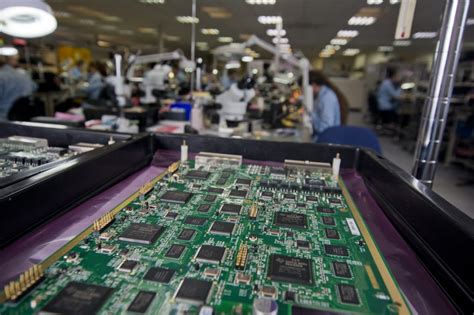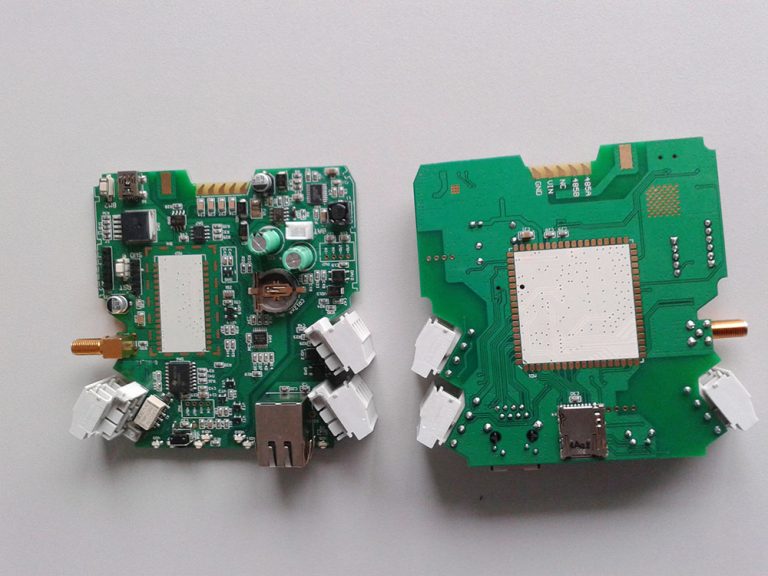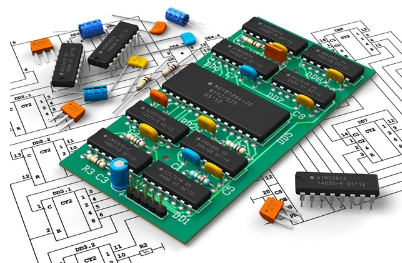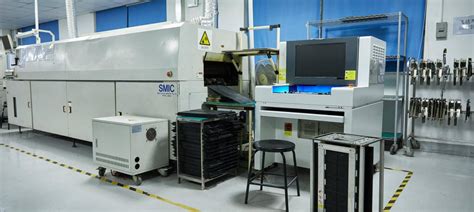Mastering Custom Electronic Assembly: A Comprehensive Guide
Key Takeaways
Custom electronic assembly is a critical aspect of modern manufacturing that encompasses a wide range of techniques and practices aimed at creating high-quality electronic products. Understanding the intricacies of pcb assembly is essential for anyone looking to excel in this field. A well-executed pcba (printed circuit board assembly) not only enhances the performance and reliability of electronic devices but also minimizes potential production issues. Key takeaways from mastering custom electronic assembly include the importance of selecting the right tools and equipment—like soldering irons, reflow ovens, and precision placement machines—that contribute to effective assemblies. Furthermore, implementing best practices such as thorough quality checks and adhering to industry standards ensures that each assembly meets stringent performance expectations. Being aware of common challenges, such as component misalignment or thermal issues, can equip practitioners with proactive strategies for troubleshooting potential pitfalls. This knowledge not only streamlines the assembly process but also fosters innovation, allowing for more complex designs and enhanced functionality in electronic products. As technology evolves, staying informed about future trends in custom electronic assembly will position practitioners at the forefront of advancements in this dynamic field.
Introduction to Custom Electronic Assembly
Custom electronic assembly, commonly known as pcb assembly or PCBA, is a critical aspect of electronics manufacturing that takes precision, skill, and a solid understanding of various components and techniques. This process entails the integration of different electronic components onto a printed circuit board, transforming individual parts into a functional assembly. Unlike mass-produced items, custom electronic assembly caters to unique project requirements, facilitating small batch productions and prototypes tailored to specific applications. Embracing pcba techniques not only allows for greater flexibility in design but also enhances innovation in projects that require specialized functionalities.
The primary objective in any custom electronic assembly is to achieve high-quality results while minimizing errors and inefficiencies. To this end, aspiring engineers and hobbyists alike should familiarize themselves with vital practices that ensure the integrity of their assemblies. For instance, understanding the different types of pcb assembly methods—such as surface mount technology (SMT) and through-hole technology (THT)—can significantly influence the outcome. As you navigate this intricate process, it is essential to pay attention to details such as component placement, soldering techniques, and quality control measures.
“Quality is not an act; it is a habit.” – Aristotle
This philosophy resonates deeply within the realm of custom electronic assembly—automating repetitive tasks while refining manual processes contributes significantly to both efficiency and effectiveness. Moreover, knowing how to troubleshoot common issues that arise during production can safeguard against costly errors. Aspiring professionals should continuously educate themselves on evolving methods and adopt tools that enhance their proficiency in producing reliable assemblies.
Ultimately, mastering custom electronic assembly not only positions individuals at the forefront of technological advancements but also empowers them to create innovative solutions in an ever-evolving industry landscape. The journey may be complex; however, with dedication and the right approach towards learning about pcba, the possibilities are endless.
Essential Tools and Equipment for Successful Assemblies
To achieve success in custom electronic assembly, a well-equipped workspace is critical. The foundation of any effective assembly process often begins with the right tools and equipment. Among the most essential tools are soldering irons, which are vital for connecting components to the PCB (printed circuit board). A high-quality soldering iron not only ensures solid connections but also allows for precision work on small components. For assembling more complex designs, utilizing a hot air rework station can be invaluable for surface mount device (SMD) assembly, enabling components to be efficiently placed without causing damage.
Additionally, a reliable multimeter is crucial in verifying connections and diagnosing potential issues during assembly. This tool helps in measuring voltage, current, and resistance within the circuit, ensuring each connection within the pcba (printed circuit board assembly) meets the required specifications. Precision tools such as tweezers and specialized pliers aid in handling tiny components, while a magnifying glass or microscope can enhance visibility when working with intricate layouts. Finally, an organized workspace with proper storage solutions is necessary to keep tools and components efficiently managed, which ultimately streamlines the entire process of custom electronic assembly. By integrating these essential tools into your workflow, you can elevate your projects and ensure high-quality results in every step of the pcb assembly process.
Techniques for Efficient Custom Electronic Assembly
Efficiency is crucial in custom electronic assembly to enhance productivity and reduce costs. Implementing structured pcb assembly techniques can significantly streamline the assembly process. One effective method is the adoption of surface mount technology (SMT), which allows for the mounting of components directly onto the surface of the printed circuit board (PCB). This method not only optimizes space but also improves electrical performance.
Another vital technique is the use of automated assembly systems. These systems, including pick-and-place machines, ensure precise placement of components on the PCB, thereby mitigating human error while increasing speed and consistency in assembling components. It’s essential to maintain these machines and routinely calibrate them to ensure optimal functionality.
Utilizing rapid prototyping can also lead to increased efficiency in pcba projects. By creating a prototype before full-scale production, teams can identify design flaws early on, minimizing time wasted on adjustments during subsequent manufacturing stages.
To help visualize some key techniques and their benefits, consider the following table:
| Technique | Benefits | Key Considerations |
|---|---|---|
| Surface Mount Technology | Space-efficient; better performance | Requires specialized equipment |
| Automated Assembly Systems | Increases speed; reduces human error | Maintenance required |
| Rapid Prototyping | Early flaw detection; saves time | May require additional resources |
Incorporating these techniques into your custom electronic assembly processes not only fosters efficiency but also paves the way for high-quality results and a smoother overall workflow. By emphasizing quality tools and methodologies, manufacturers can significantly enhance their operational capacity within this field.
Best Practices to Ensure Quality in Electronic Assembly
Ensuring high-quality pcb assembly is crucial for the overall success of electronic projects. One of the first best practices is to implement thorough design reviews before any physical assembly begins. This step helps identify potential design flaws that could hinder performance or manufacturability, ultimately saving time and resources. In addition, using high-quality components is vital; sourcing parts from reputable suppliers guarantees reliability during operation.
Another essential practice is to maintain a clean and organized workspace. Dust and debris can interfere with sensitive electronics, leading to malfunctions in the final product. Additionally, employing a standardized process for pcba assembly can minimize errors during production. This means establishing specific workflows that detail each step of the assembly, from soldering components to testing the finished board.
It’s also beneficial to incorporate testing at regular intervals throughout the assembly process. Utilizing automated optical inspection (AOI) technology can quickly identify defects that might go unnoticed with manual inspection alone. Furthermore, investing in employee training ensures all technicians are proficient in best practices and are equipped with the necessary skills to perform their tasks expertly.
Finally, documenting each stage of your pcb assembly facilitates traceability and quality control; should issues arise later on, having detailed records helps identify where problems occurred and prevent future occurrences. By adhering to these best practices, you can significantly improve the quality and reliability of your custom electronic assemblies, ultimately leading to better performance in your projects.
Common Challenges in Custom Electronic Assembly and Solutions
Custom electronic assembly, often referred to as PCB assembly or PCBA, presents a unique set of challenges that can impact the efficiency and quality of the final product. One of the most prevalent issues is component misalignment, which can lead to poor electrical connections and ultimately, device failure. To combat this, employing precise placement tools and advanced automation technologies, such as pick-and-place machines, can greatly enhance component accuracy.
Another significant challenge is thermal management during the assembly process. Excessive heat can damage sensitive components; therefore, it’s essential to utilize effective cooling methods and thermal profiles. Implementing a thorough temperature monitoring system ensures that components do not exceed their maximum allowable temperatures during soldering.
Furthermore, issues related to solder quality, such as cold solder joints or insufficient solder coverage, can arise. Adhering to best practices in soldering techniques—such as ensuring the right chemistry of solder and maintaining proper temperatures—can mitigate these problems.
Lastly, achieving consistent quality in assemblies often hinges on inadequate inspection processes. To address this challenge, incorporating automated optical inspection (AOI) systems ensures that any defects are identified early before they escalate into more significant issues. By recognizing these common hurdles in custom electronic assembly and adopting targeted solutions, manufacturers can enhance the performance of their PCBA operations while ensuring higher reliability in their products.
The Role of Prototyping in Custom Electronic Assembly
Prototyping plays a crucial role in custom electronic assembly, specifically in enhancing the quality and functionality of PCB assembly processes. By creating a preliminary model, engineers can test design concepts and evaluate the feasibility of their ideas before moving forward with mass production. This iterative process allows for the identification of potential flaws early on, thereby reducing the risk of costly mistakes later in the development cycle. Through prototyping, teams can explore various PCBA layouts and configurations, ensuring that the components interact seamlessly. Furthermore, making adjustments to prototype designs fosters innovation and accelerates product development timelines, ultimately leading to higher-quality assemblies. Moreover, prototyping not only sheds light on design optimization but also assists in aligning project goals with customer expectations. This proactive approach signifies a commitment to excellence and positions businesses to adapt swiftly to market demands while still delivering superior custom electronic assembly solutions.
Case Studies: Success Stories in Custom Electronic Assembly
In exploring the realm of custom electronic assembly, it becomes evident that real-world examples can illuminate the path to success for many projects. Take, for instance, a case study involving a start-up that specialized in creating innovative wearables. By implementing a streamlined pcb assembly process, this company was able to decrease production time by 40% while simultaneously improving quality. This success was largely due to the integration of advanced tools and techniques tailored for pcba. The use of automated assembly equipment not only reduced human error but also allowed for more precise component placement, thus enhancing overall functionality.
Another inspiring example is that of a well-established healthcare device manufacturer that faced significant challenges with their previous assembly processes. Through meticulous adaptation of best practices in custom electronic assembly, they revamped their production line, significantly reducing costs and increasing yield rates. By incorporating robust testing protocols into their pcb assembly, they ensured high-quality outputs that met the industry standards. This transformation not only boosted their market competitiveness but also fostered greater trust among their clientele.
These case studies highlight the critical importance of adapting strategies and utilizing appropriate tools to achieve significant milestones in custom electronic assembly. With a foundation built on successful examples like these, businesses can feel empowered to pursue innovative solutions tailored to their unique challenges in the ever-evolving electronics landscape.
Future Trends in Custom Electronic Assembly Techniques
As the demand for personalized electronics continues to surge, the landscape of custom electronic assembly is undergoing rapid transformation. One of the most notable trends is the increasing integration of automation in pcb assembly processes. Utilizing advanced robotics and AI-driven systems not only enhances efficiency but also ensures precision in pcba operations, paving the way for higher production rates and reduced human error. Furthermore, miniaturization remains a critical focus, with manufacturers striving to create compact assemblies that do not compromise functionality. This trend is fueled by the rise of IoT devices, which require smaller yet more sophisticated components.
Beyond automation and miniaturization, there is a growing emphasis on sustainability in electronics manufacturing. Companies are actively seeking eco-friendly materials and methods that reduce waste while maintaining product quality. The use of lead-free solder and recyclable components has become more common, reflecting a commitment to creating a sustainable future in the custom electronic assembly domain.
Additionally, we are witnessing an expanded role for rapid prototyping technologies that enable engineers to test designs quickly before moving into full-scale production. This shift allows for higher flexibility and adaptability in design changes, ultimately leading to better end products. As these trends develop, staying abreast of innovations will be crucial for businesses looking to thrive in an increasingly competitive market landscape surrounding pcb assembly and pcba services.
Conclusion
In summary, mastering custom electronic assembly (often referred to as PCBA) is an essential step for those looking to enhance their project output and efficiency in electronics. Throughout this guide, we’ve explored a variety of techniques and best practices that can ultimately lead to superior quality in your assemblies. Understanding the nuances of pcb assembly processes allows for a more precise approach, minimizing errors that could compromise the performance of electronic devices. Moreover, the right combination of tools and equipment can significantly streamline the workflow and lead to significant time savings. By embracing innovative prototyping methods and remaining attuned to emerging trends, practitioners can not only overcome common challenges but also position themselves at the forefront of industry advancements. As you’re equipped with this wealth of knowledge, remember that continuous learning and adaptation are vital for thriving in the fast-paced world of custom electronic assembly.
FAQs
What is custom electronic assembly?
Custom electronic assembly refers to the process of creating bespoke electronic products tailored to specific requirements, which often involves PCB assembly or PCBA of various components.
What are the primary components involved in PCB assembly?
Key components in PCB assembly include resistors, capacitors, integrated circuits, and connectors, all of which are meticulously placed and soldered onto the printed circuit board.
How do I ensure quality in my custom assemblies?
To ensure high-quality results in your custom assemblies, follow best practices such as regular inspection during the PCBA process, using automated tools for precision, and adhering to industry standards throughout.
What tools are essential for effective PCB assembly?
Essential tools for effective PCB assembly include soldering irons, pick-and-place machines, and inspection equipment to verify that each component is properly aligned and functioning correctly.
Can common challenges in custom electronic assembly be avoided?
Yes, common challenges such as component misalignment or insufficient solder can often be mitigated through rigorous testing and employing standard operating procedures during the PCBA process.
For more detailed information on how to succeed in your projects, please click here: https://www.andwinpcb.com/pcb-assembly/







